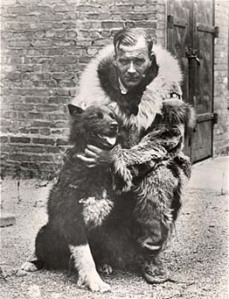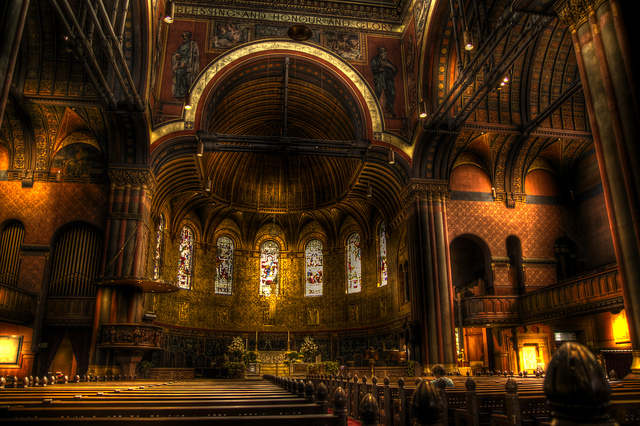![]()
Today we commemorate the feast of Andrei Rublev, a monk and iconographer. Why do we remember him so fondly this day? He was generally acknowledged as Russia’s greatest iconographer, but his significance may have more to do with the nature of icons.
He was born around 1365 near Moscow. While very young he entered the monastery of the Holy Trinity and in 1405 he transferred to the Spaso- Andronikov monastery where he studied iconography with Theophanes, the Greek, and the monk Daniel. Shown above is one of his most famous works called The Holy Trinity or The Hospitality of Abraham. The later title refers to the story in Genesis 18:1-8 which relates the story of Abraham’s hospitality toward three angels.
Icons, a word derived from the Greek for image, play a central role in the spirituality of Orthodox Christianity and actually in the spirituality of the whole of the Christian community. As more and more Christians become aware of the true nature of icons their veneration (honor) has gained popularity among an ever widening circle of Christian communities. “They seek to provide immediate access to the spiritual and the divine unmediated by the human, historical imagination.”1 Think about that. What is meant by “unmediated” or by the “human and historical imagination.”
In discussing the “experience’ of the prophets Rabbi Abraham Heschel in his classic work The Prophets states that “A person’s perception depends upon his experience , upon his assumptions, categories of thinking, degrees of sensitivity , environment, and cultural atmosphere.” In other words “a person will notice what he is conditioned to see” . 2 The prophets perception, on the other hand, was conditioned by their experience of inspiration, that is their direct experience of God himself unfiltered by their perceptions derived from human history.
Therefore, icons are very much akin to prophetic utterances as they provide a means for those who meditate upon to directly experience God. We experience the message of the icon and use it as one would use a door to open into an experience of God himself.
The icon is two dimensional and despite being an image of someone it is not a “physical portrait”. In contrast western art, especially since the renaissance, typically seeks to represent figures or events so that the viewer might better imagine them.
“For Andrei Rublev, “writing” an icon was a spiritual exercise.” 3 It involved the preparation of the surface, applying the painted and precious metal background and then creating the image, first outlining it in red. Throughout this process Andrei would recite the Jesus prayer: “Lord Jesus, Son of God, have mercy on me”. Like the prophets who went before him he was through his art creating a window into the divine unfettered by the preconceived notions of human history.
Each one of us is also an icon of God as we are made in his image. Orthodox spirituality in particular emphasizes the crafting of our minds and bodies in order to bring them into such a state that we are perfectly aligned with the divine. The Orthodox refer to this as theosis.
To venerate (honor, not worship) an icon is to find some of the ineffable beauty that is God, that is manifest in Christ and the saints, and also in each one of us.
In addition to the utterances of prophets and the art of iconographers holy scripture makes reference to another vehicle by which a door to the divine can be found. That is incense. Its use as a means of achieving theosis is actually sanctioned by Saint Paul himself, no less, in his second letter to the Corinthians.
In Chapter 2, verses 14-17 , one of the lessons appointed to be read in honor of Andrei Rublev, the holy Apostle tells us:
But thanks be to God, who in Christ always leads us in triumph, and through us spreads the fragrance of the knowledge of him everywhere. For we are the aroma of Christ to God among those who are being saved and among those who are perishing, to one a fragrance from death to death, to the other a fragrance from life to life. Who is sufficient for these things?
To view other icons created by Andrei Rublev please follow this link:
Notes:
- Holy Women, Holy Men, Church Pension Fund (2010) page 196.
- Heschel, The Prophets, Harper and Row (New York, 1962) at page 222
- Note 1 supra.
- A Reproduction of The Trinity by the Reverend Charles Davis now hangs in Seibels Chapel, Trinity Episcopal Cathedral, Columbia, South Carolina.



